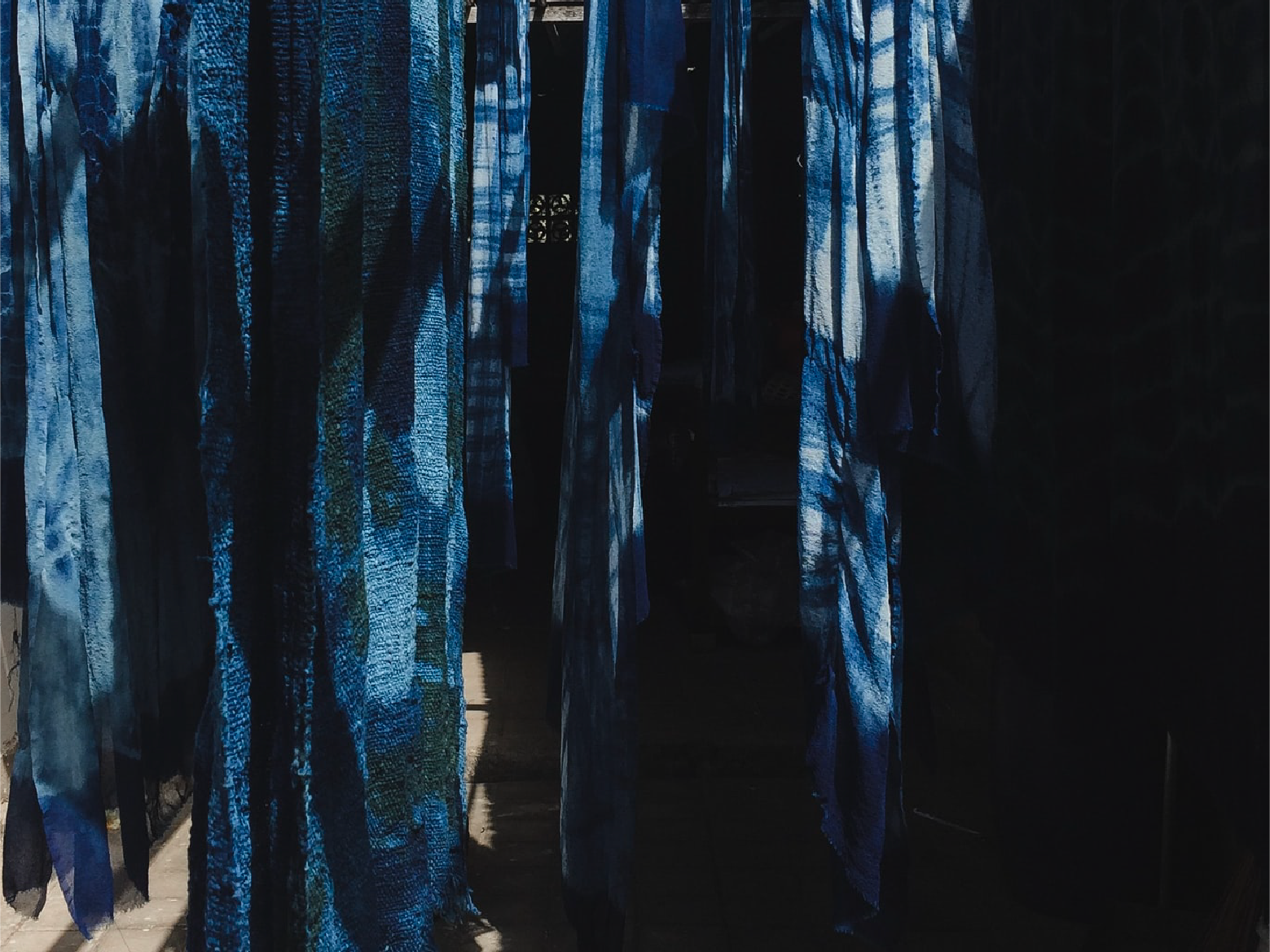Notorious ‘Nila’. Brilliant ‘Blue Gold’. Ink Indigo.
A color with a language all its own. A puzzle, with pieces strewn across many borders. A way of life for some.
The name of this beloved pigment comes from the Greek word Indikon, meaning from India, but traditional Indigo dyes can be found far and wide. The Japanese consider it a part of their intangible cultural heritage. Minority communities in Vietnam have handed down indigo production skills and expertise through the generations. And in places like Mexico, Nigeria, and Thailand, one can find communities that have their own spiritual rituals, recipes and techniques for creating natural Indigo.
The dye’s history is also witness to plenty of drama, particularly in India where British colonial planters called it Blue Gold. It has even ignited conflict – the 1859 Indigo Rebellion saw farmers revolt against oppressive conditions during the British Raj. More recently, indigo is the very dye that colored your favorite denims in the early 20th century. Literally speaking, Indigo is woven into the fabric of every land and culture.
The demanding and complex process of turning green leaves (of the plant Indigofera Tinctoria) into a deep, midnight blue dye through fermentation may have been practiced for thousands of years, but it still feels magical to those that create it. The hands of these artisans are forever marked with blue from repeated exposure to Indigo production and dyeing. The process is so uncertain and unpredictable, that each batch is unique ensuring that every time you dye something in Indigo, it becomes your very own imprint.
It is moody and needs to be nurtured.
It is complex and can push you to the edge while you try to get it right.
It is mysterious as no two batches of this dye are ever the same.
Above all, it is full of energy and breathes life into fabric - like no other color does.


This ‘King of Dyes’, once for the exclusive use of royalty and the aristocracy, is now widely used in well-known textile arts such as Ajrakh, Shibori and Ikat.
Ajrakh, is a block-printing technique that has been embedded in subcontinental culture with linkages all the way back to the ancient Indus Valley Civilization. The word has its origins in the Arabic language and is derived from “azrak”, meaning ‘blue’. No coincidence then that the primary natural dye used in printing these borderless textiles is our very own Indigo.
In other parts of India, Central and Southeast Asia Ikat, fabrics feature a complicated resist dyeing technique that leads to fabrics prized for their blurriness. Further east, in Japan, Shibori is another centuries-old resist-dyeing process using a white cloth which is folded, bunched or twisted then tied and finally dipped in dye. Both these traditional crafts make liberal use of Indigo.
Be it in art or the everyday, our ancestors colored their lives with natural Indigo. It has given us a million stories of character and depth that synthetic versions cannot match. Mercifully, the natural dye continues to hold its own against synthetic alternatives - a small triumph in preserving these skilled artisans’ expertise and heritage.
Indigo is not just any blue. It has layers, depth and dualities and is forever evolving. It is indelible and known to leave a lasting mark…no wonder then that our relationship with Indigo runs deep.
(Love, Indus Recommends: Deep dive into Indigo hues with the book Indigo: The Color that Changed the World)




